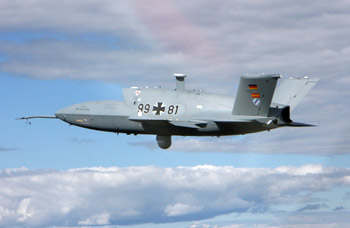INDIAN ARMED FORCES CHIEFS ON OUR RELENTLESS AND FOCUSED PUBLISHING EFFORTS

The insightful articles, inspiring narrations and analytical perspectives presented by the Editorial Team, establish an alluring connect with the reader. My compliments and best wishes to SP Guide Publications.

"Over the past 60 years, the growth of SP Guide Publications has mirrored the rising stature of Indian Navy. Its well-researched and informative magazines on Defence and Aerospace sector have served to shape an educated opinion of our military personnel, policy makers and the public alike. I wish SP's Publication team continued success, fair winds and following seas in all future endeavour!"

Since, its inception in 1964, SP Guide Publications has consistently demonstrated commitment to high-quality journalism in the aerospace and defence sectors, earning a well-deserved reputation as Asia's largest media house in this domain. I wish SP Guide Publications continued success in its pursuit of excellence.
- Indian Air Force Aims for Full Indigenous Inventory by 2047 — Air Chief Marshal A.P. Singh
- General Upendra Dwivedi takes over as the Chief of the Army Staff
- Rajnath Singh assumes charge as Defence Minister for the second consecutive term
- Admiral Dinesh K. Tripathi assumes Command of the Indian Navy as 26th Chief of the Naval Staff
- Prime Minister witnesses 'Bharat Shakti' – a Tri-Services Firing and Manoeuvre Exercise in Pokhran, Rajasthan
Barracuda: 10 years of development in unmanned flight tech

Cassidian looks back over what is now 10 years of test flight experience with its Barracuda UAS demonstrator, a time in which the company gathered unique know-how. Barracuda forms one of the elements of Cassidian’s comprehensive UAS capabilities, which make the company the European leader in this high-tech segment.
“With this unique unmanned demonstrator in Europe, Cassidian is in a position to forge ahead with technological development in unmanned aerial systems,” explains Rolf Wirtz, head of Cassidian’s Mission Systems unit and one of the initiators of the Barracuda programme.
Barracuda allows Cassidian to explore all of the key questions of unmanned flight. This also includes the development of the TCAS collision avoidance system for UAS and various aspects of automation. Today’s research activities focus mainly on two points: network-centric operations and the integration of unmanned aerial systems into controlled airspace. Since the development of the demonstrator began in 2003, Barracuda has completed more than 540 ground tests and 13 flight tests. And the results from Barracuda testing are directly incorporated into the development of future UAS by Cassidian.
The Barracuda demonstrator is over eight metres long, has a wingspan of more than seven metres and a maximum take-off weight of around three tonnes. It is propelled by a jet turbine from Pratt & Whitney Canada, which delivers 14 kN thrust, and operates entirely autonomously during the test flights, only being monitored for flight safety purposes. The unmanned aerial vehicle’s structure consists entirely of carbon-fibre composites (CFC). Apart from the landing gear, Barracuda is an innovative “electrical airborne system” that, in contrast to conventional aircraft, dispenses with hydraulic components and uses electro-mechanical actuators instead.
In May 2006, Barracuda took off for its maiden flight in Murcia, Spain. Since 2009, the flight tests have been carried out from the Canadian Goose Bay military airport. In this context, Barracuda has been used for flights to test the Bundeswehr’s unmanned flight procedures as part of the research and development programme “Agile UAV in Network Centric Environment” by the German Federal Office of Bundeswehr Equipment, Information Technology and In-Service Support (BAAINBw). Further campaigns are already being planned.





